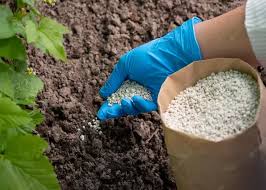
Sep . 06, 2024 15:50 Back to list
3-3-3 Fertilizer
Understanding 3-3-3 Fertilizer A Balanced Approach to Plant Nutrition
Fertilizing is a fundamental aspect of gardening and agriculture, crucial for promoting healthy growth and maximizing crop yields. Among the many types of fertilizers available, 3-3-3 fertilizer stands out due to its balanced nutrient composition. This article will delve into what 3-3-3 fertilizer is, its composition, benefits, and how to use it effectively.
3-3-3 fertilizer is categorized as an all-purpose fertilizer, characterized by its equal ratio of the three primary macronutrients nitrogen (N), phosphorus (P), and potassium (K). These three nutrients are essential for plant growth, each playing a vital role in various physiological processes. Nitrogen is primarily responsible for promoting leafy growth and overall vigor. Phosphorus supports root development and flowering, while potassium enhances disease resistance and overall hardiness.
The balanced ratio of 3-3-3 makes this fertilizer particularly versatile, suitable for a wide range of plants, whether they are ornamental flowers, vegetables, or shrubs
. The nutrients in 3-3-3 fertilizer are released gradually, providing a steady supply of nourishment over time. This slow-release feature is beneficial for preventing nutrient leaching, which can occur in sandy soils, ensuring that plants receive essential nutrients without the risk of sudden, excessive dosage.3-3-3 fertilizer

One of the key benefits of using 3-3-3 fertilizer is its adaptability to different types of soils and plants. It is particularly useful during the early stages of plant development, as it lays a strong foundation by supporting root establishment and healthy foliage. Additionally, because of its balanced formulation, it can be applied throughout the growing season, providing continuous support without the need for frequent adjustments.
Using 3-3-3 fertilizer effectively requires understanding the right application methods and timings. It’s essential to read the packaging instructions and follow the recommended guidelines based on the specific plants you are nurturing. For most applications, broadcasting the fertilizer around the base of the plants is an effective method. This should be done during the active growing season, when plants need the additional nutrients to thrive.
Another consideration when utilizing 3-3-3 fertilizer is understanding soil health. Conducting a soil test is a wise first step to determine existing nutrient levels and acidity. This information can guide your fertilization strategy, ensuring that you are meeting the specific needs of your plants. While 3-3-3 provides a balanced nutrient boost, other amendments such as organic matter or specific micronutrients might still be needed based on the soil test results.
In conclusion, 3-3-3 fertilizer offers a balanced and versatile solution for promoting plant health. Its equal distribution of nitrogen, phosphorus, and potassium makes it suitable for various applications, providing the essential nutrients required for robust growth. By understanding how to effectively apply and integrate 3-3-3 fertilizer into your gardening practices, you can foster healthier plants and achieve bountiful harvests. Whether you are a seasoned gardener or a beginner, incorporating this balanced fertilizer into your regimen can help you meet your gardening goals with ease and efficiency.
-
10 10 10 Fertilizer Organic—Balanced NPK for All Plants
NewsJul.30,2025
-
Premium 10 10 10 Fertilizer Organic for Balanced Plant Growth
NewsJul.29,2025
-
Premium 10 10 10 Fertilizer Organic for Balanced Plant Growth
NewsJul.29,2025
-
Premium 10 10 10 Fertilizer Organic for Balanced Plant Growth
NewsJul.29,2025
-
50 Pound Bags of 13-13-13 Fertilizer for All Plants – Bulk & Organic Options
NewsJul.28,2025
-
High-Efficiency 15-30-15 Granular Fertilizer for Healthy Crops
NewsJul.28,2025
